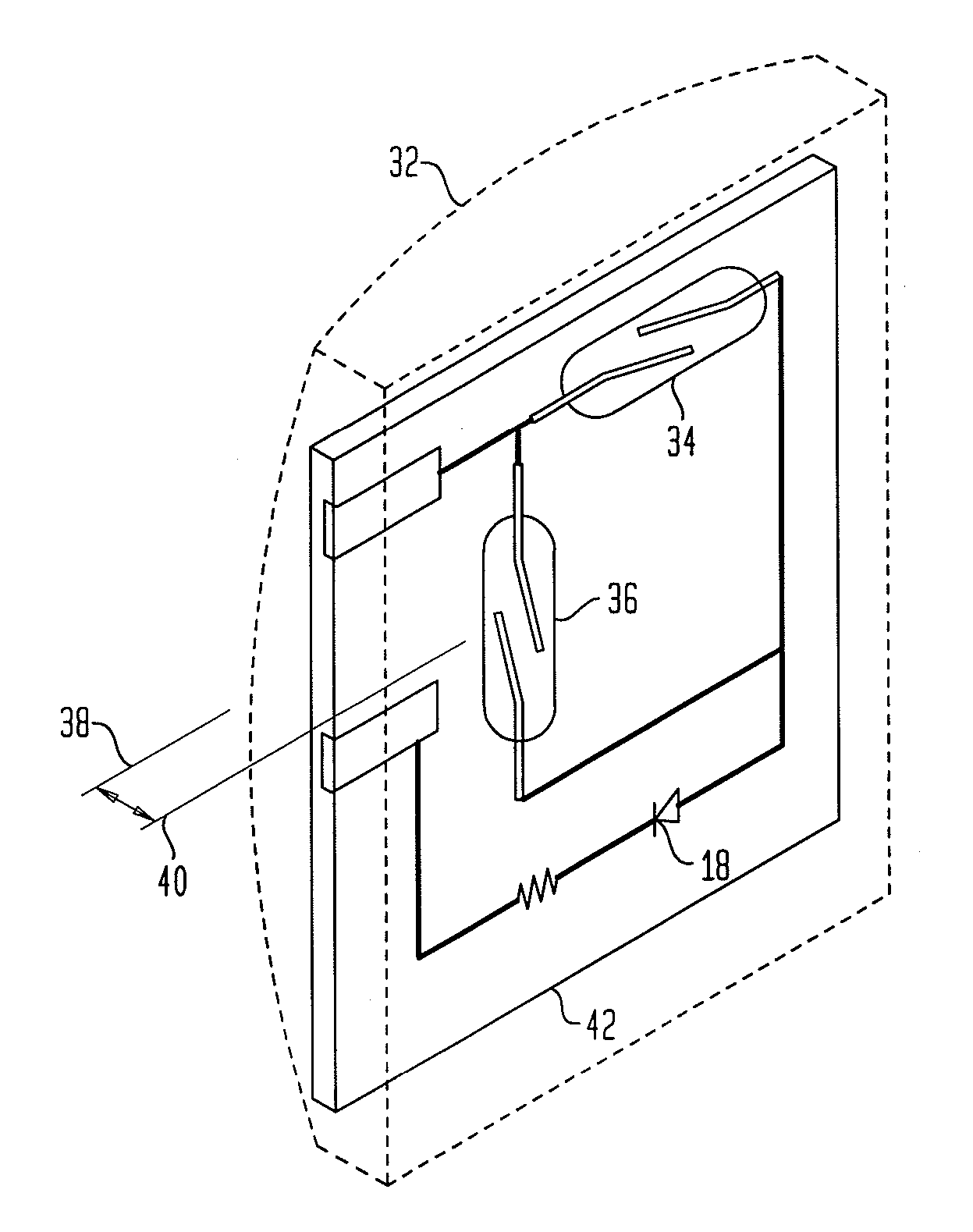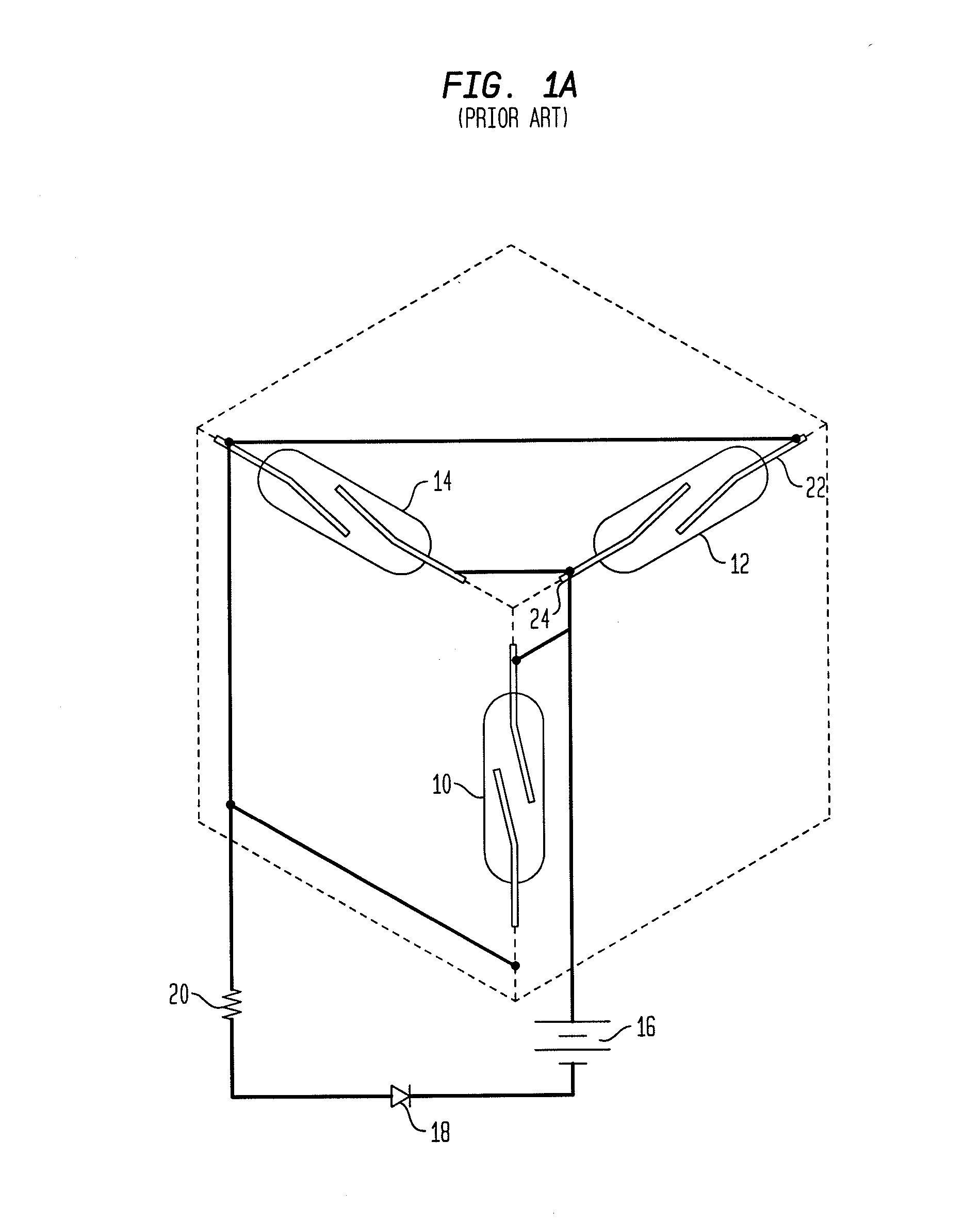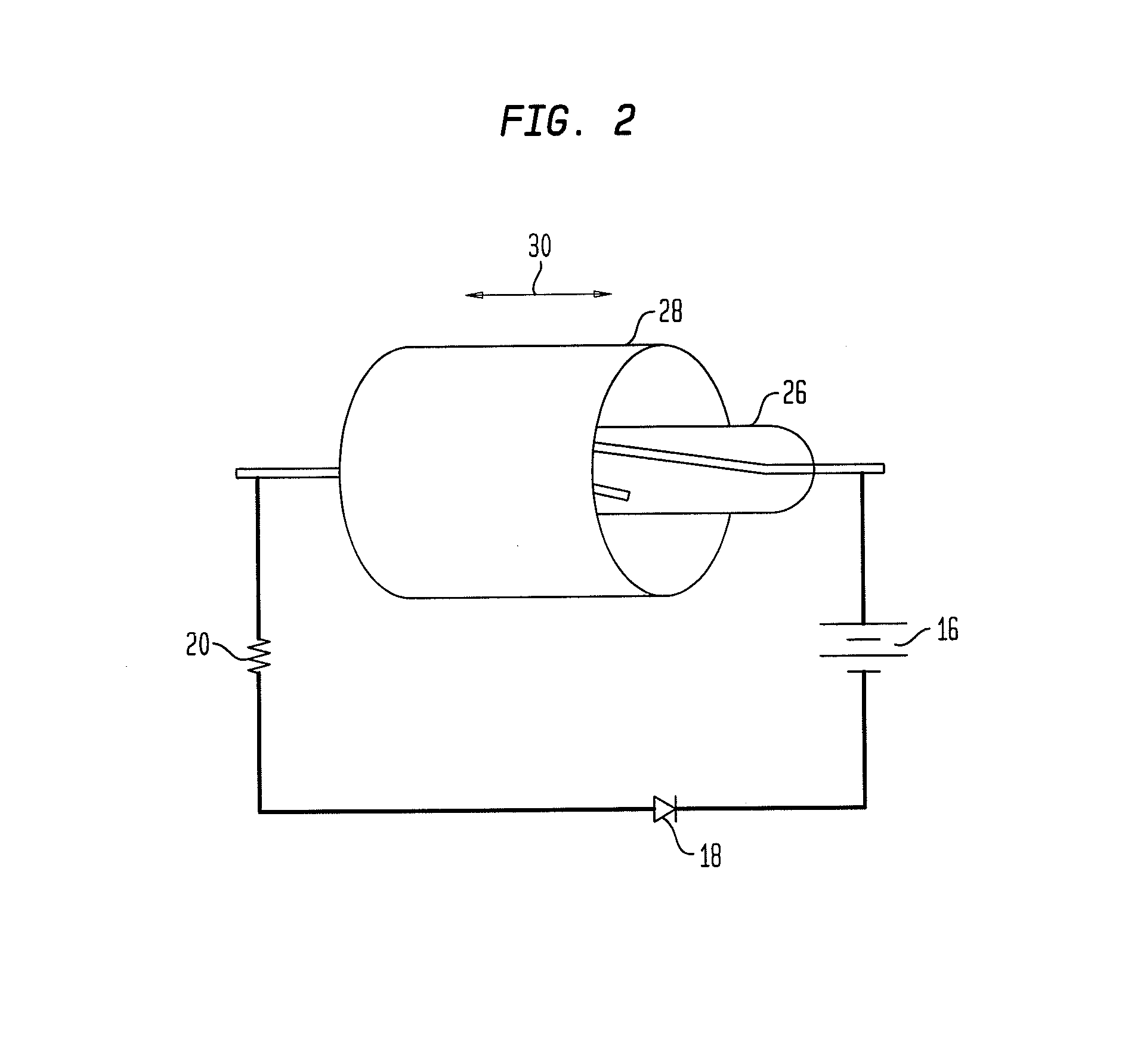Detector for magnetic hazards to implanted medical device
a medical device and detector technology, applied in the field of magnetic field detection devices, can solve problems such as unsatisfactory implant device function modification, difficult task, and patients' problems
- Summary
- Abstract
- Description
- Claims
- Application Information
AI Technical Summary
Benefits of technology
Problems solved by technology
Method used
Image
Examples
Embodiment Construction
[0018]The present invention applies to portable devices to detect magnetic fields, and particularly to portable devices that detect magnetic fields from permanent magnets or DC electromagnets that could affect implanted medical devices. Such a device is desirable because a variety of medical implant devices are designed to be controlled, or modified, by the presence of strong magnetic fields.
[0019]The implant manufacturer advises the patient, or the caregiver, to avoid magnetic fields stronger than a certain level. Three problems arise:
[0020]1. The patient is confronted with a world in which magnets are found in profusion. Toys, loudspeakers, headphones, and refrigerator note holders are just a few examples. Avoiding all magnets is an endless task. A laboratory-grade magnetometer usually costs $1000 or more, is not portable, and has to be plugged into an electric power source. The patient needs a yes-or-no answer about the strength of the magnetic field. A portable, battery-powered,...
PUM
 Login to View More
Login to View More Abstract
Description
Claims
Application Information
 Login to View More
Login to View More - R&D
- Intellectual Property
- Life Sciences
- Materials
- Tech Scout
- Unparalleled Data Quality
- Higher Quality Content
- 60% Fewer Hallucinations
Browse by: Latest US Patents, China's latest patents, Technical Efficacy Thesaurus, Application Domain, Technology Topic, Popular Technical Reports.
© 2025 PatSnap. All rights reserved.Legal|Privacy policy|Modern Slavery Act Transparency Statement|Sitemap|About US| Contact US: help@patsnap.com



